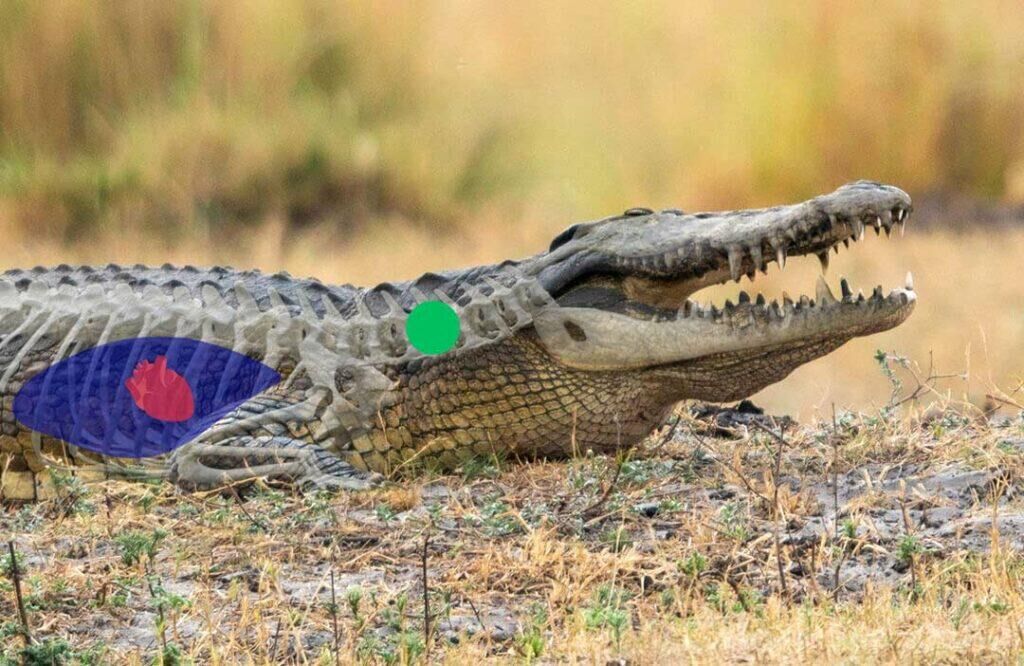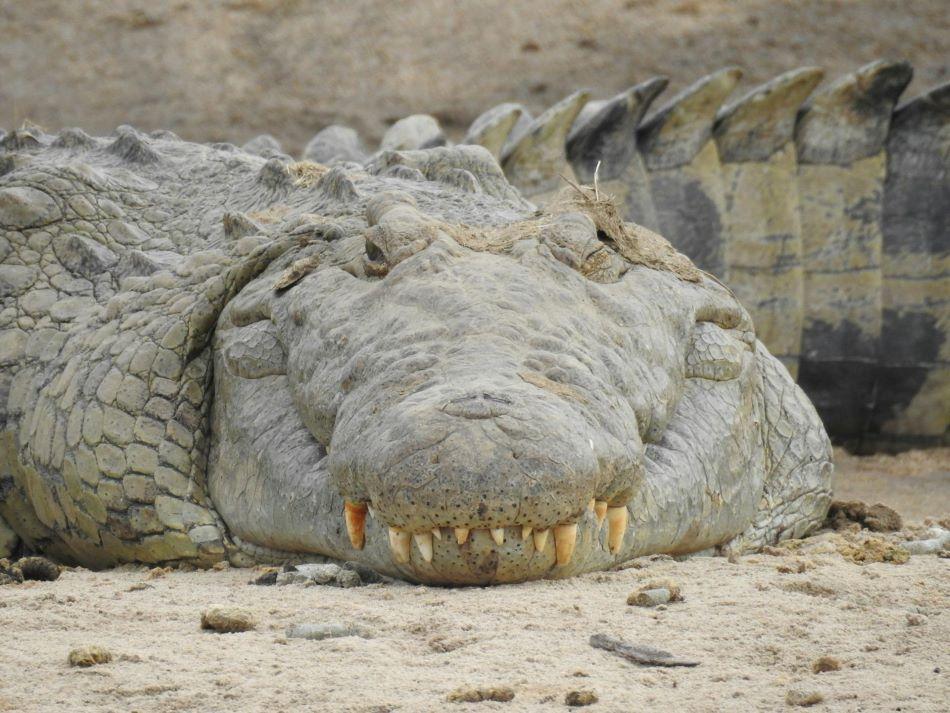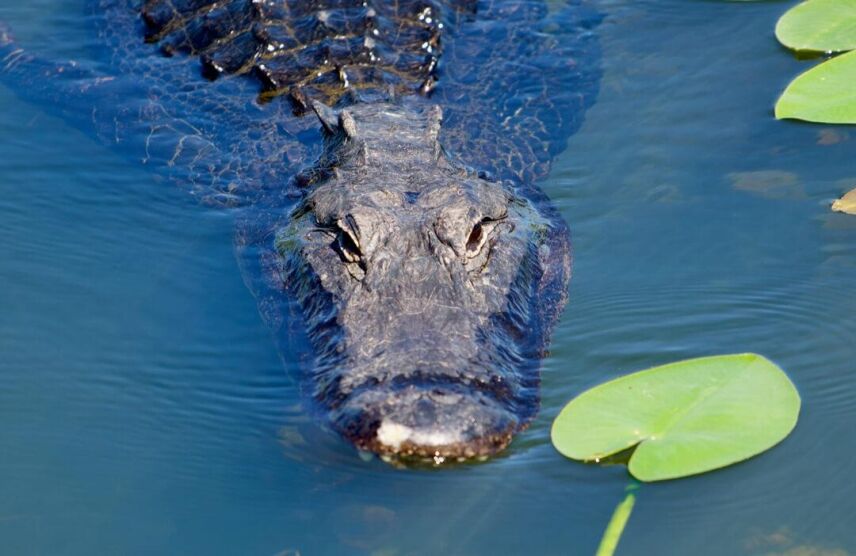Crocodiles are some of the most efficient and calculated predators in the wild, making their hunting techniques a fascinating study. As apex predators, they rely on stealth, patience, and explosive power to secure their prey. Understanding how crocodiles hunt gives us a deeper appreciation for their role in the ecosystem and the challenges they present during dangerous game hunts.
These powerful reptiles are masters of ambush, using their ability to stay submerged and nearly invisible in water to their advantage. With a combination of sharp instincts and precise timing, crocodiles strike with remarkable speed, ensuring their success as hunters. Exploring their methods not only highlights their survival skills but also prepares us for the unique demands of encountering such creatures in the wild.
[DYNAMIC-BLOGTABLEOFCONTENT]
Key Takeaways
- Crocodiles are apex predators known for their stealth, patience, and explosive power, making them highly efficient hunters.
- They use ambush techniques, often positioning themselves in high-traffic areas like riverbanks and watering holes to surprise their prey.
- Their physical adaptations, such as powerful jaws, sharp teeth, and muscular tails, enable them to execute precise and swift attacks in both water and on land.
- Crocodiles adapt their hunting strategies to their environment, using stealth and speed in water and short, powerful bursts on land.
- Their diet is diverse and opportunistic, including fish, birds, mammals, and scavenged carcasses, allowing them to thrive in various ecosystems.
- By understanding crocodile hunting behaviors, we gain insights into their role in maintaining ecological balance and their survival as ancient predators.
Understanding Crocodile Hunting Behavior
Crocodiles hunting showcases their exceptional skills as ambush predators. They rely on a combination of stealth, patience, and sudden force to secure prey. Submerging their bodies in water, crocodiles remain nearly invisible, only exposing their nostrils and eyes. This tactic allows them to observe prey while staying undetected.
Their movements are calculated, conserving energy for the crucial moment. When prey comes within striking distance, crocodiles unleash explosive power, using their strong jaws to capture and secure their target. Examples include fish, birds, and larger mammals like antelope. These attacks are swift, giving prey little time to react.
Crocodiles often choose specific locations for hunting, such as riverbanks or watering holes. These areas attract prey, offering optimal opportunities for successful ambushes. This strategic selection of hunting zones highlights their intelligence and understanding of prey habits.
Our fascination with crocodiles hunting may stem from their ancient survival methods. Monitoring their behavior also provides insights into maintaining ecological balance in shared environments. Observing and respecting their hunting patterns ensures safety and fosters coexistence in natural habitats.

The Role Of Stealth In Crocodile Hunting
Stealth defines how crocodiles hunt, combining stillness and timing to overwhelm prey. Observing their tactics reveals the effectiveness of these methods in achieving hunting success.
Camouflage And Ambush Techniques
Crocodiles hunting prey begins with hidden movement. Their rough, earth-toned skin mimics the water surface or surrounding land. They remain motionless in muddy riverbanks or shallow waters, where prey feel secure. Eyes and nostrils above water allow subtle observation without revealing their position.
Ambush relies on careful positioning. Crocodiles choose high-traffic zones near riverbanks or watering holes used by animals. This strategic selection improves hunting success while minimizing efforts. They strike only when the prey is vulnerable, ensuring precision and energy conservation.
Patience As A Key Strategy
Crocodiles hunting strategies rely heavily on patience. Remaining motionless for hours or even days, they blend into their environment to avoid detection. This waiting game prevents alarming potential prey and allows them to approach naturally.
Timing is critical during their hunt. They only attack when prey is within striking range, using their immense jaw strength and speed to ensure minimal escape opportunities. This calculated approach highlights their efficiency as apex predators.
By understanding these behaviors, we gain insights into how crocodiles dominate their habitats and maintain ecological balance.
Physical Adaptations For Hunting
Crocodiles possess unique physical traits that enhance their hunting efficiency. These adaptations enable precise attacks and make them dominant predators within their ecosystems.
Powerful Jaws And Teeth
Crocodiles have strong jaws capable of exerting a bite force of up to 3,700 pounds per square inch (psi). This immense strength helps them crush bones and secure prey effectively. Their teeth are conical, designed to pierce and hold onto slippery targets like fish or large mammals. For example, when preying on an antelope or bird, their teeth interlock to prevent escape, regardless of the prey’s struggles.
Unlike mammals, crocodiles continuously replace lost teeth throughout their lives, ensuring they’re always prepared for hunting. With an average of 80 teeth at any time, they possess a biological advantage for tearing flesh and gripping prey during their ambush strikes. These dental structures, along with their jaw power, are critical components of crocodiles’ hunting success.
Strong Tails And Swift Movement
Crocodiles’ tails are muscular and highly versatile. They use these tails for propulsion in water, allowing them to swim at speeds of up to 20 miles per hour. This rapid underwater movement gives them the ability to close in on prey quickly before the victim has time to react. For instance, fish swimming near the water’s surface are often caught off-guard by a swift tail-powered lunge.
On land, their tails provide balance and support during brief charges, enabling bursts of speed to capture unwary mammals like deer or wild boar near riverbanks. Combined with their streamlined bodies, crocodiles’ tails allow them to blend stealth with agility, critical for executing surprise attacks in their hunting process.

Hunting Methods In Different Environments
Crocodiles adapt their hunting techniques to diverse environments, utilizing unique strategies suitable for water and land. These methods highlight their versatility and adaptability as apex predators.
Hunting In Water
Crocodiles rely on stealth and precision to dominate aquatic hunting. Submerging themselves almost entirely, they leave only their eyes and nostrils above water, masking their presence. Their camouflage with murky depths and motionless positioning allow them to approach prey undetected.
Using their powerful tails, crocodiles propel through water at speeds up to 20 mph, closing the distance swiftly. Once in range, they burst forth with powerful jaws capable of delivering a bite force of 3,700 PSI. Targeting fish and waterfowl, they exploit their reflexive movements to snag animals with conical teeth, locking prey firmly in place.
During hunts in rivers or lakes, crocodiles use the “death roll” to subdue larger prey. By spinning with immense force, they disorient and disable animals, making them less resistant.
Hunting On Land
On land, crocodiles adopt different strategies tailored to their slower mobility. They use riverbanks, watering holes, and nearby trails frequented by mammals as hunting bases. By blending with surrounding vegetation, they capitalize on unsuspecting prey approaching these resources.
Unlike water environments, land-based hunts involve short bursts of speed reaching up to 11 mph. Leveraging their muscular tails and strong limbs, crocodiles execute explosive lunges to cover short distances fast. Medium to large mammals, such as antelope or wildebeest, often fall victim to these surprise attacks.
In some instances, crocodiles cooperate during land or semi-aquatic hunts, creating situations where groups focus on herding or overwhelming prey. This collective hunting approach demonstrates their strategic intelligence.
These contrasting methods, both in water and on land, showcase the efficiency and dominance of crocodiles hunting in variable ecosystems, ensuring success across their habitats.
Prey Selection And Diet
Crocodiles hunt a diverse range of species, using their highly adaptable predatory skills to target available prey. Their diet reflects both their opportunistic nature and the ecosystems they inhabit. By examining common prey species and feeding habits, we can understand how crocodiles thrive as apex predators.
Common Prey Species
Crocodiles hunt fish, amphibians, reptiles, birds, and mammals, tailoring their approach based on prey behavior. Fish, such as tilapia and catfish, are primary aquatic targets, often captured during stealthy underwater strikes. Birds, including waterfowl like herons or egrets, are frequently snatched as they wade or perch near water edges. Mammals such as antelope, deer, or livestock may fall victim when drinking in vulnerable locations like riverbanks or watering holes.
Juveniles consume smaller prey, such as insects and crustaceans, while adults ambush larger animals with controlled bursts of power. Their prey selection often reflects the biodiversity and availability within their habitat.
Opportunistic Feeding Habits
Crocodiles’ diets vary based on seasonal changes and prey abundance. They’re known for their adaptability, scavenging carcasses and exploiting whatever is accessible. This opportunistic feeding includes targeting animals migrating or restricted by drought conditions, which enhances their survival during resource-scarce periods.
Crocodiles hunting in aquatic settings also demonstrate patience, capturing large migratory fish during breeding season or preying on animals crossing rivers. They exhibit incredible energy efficiency by consuming infrequent meals, often ingesting large quantities at once. As an example, a crocodile might consume up to half its body weight in a single feeding session, followed by extended fasting periods.
The flexibility in diet and opportunistic feeding behavior highlights crocodiles’ ability to dominate terrestrial and aquatic ecosystems.
Conclusion
Crocodiles are masterful hunters, blending patience, stealth, and power to dominate their ecosystems. Their adaptability, coupled with physical and behavioral traits, ensures their success in both aquatic and terrestrial environments. By understanding their hunting strategies, we gain a deeper appreciation for their role as apex predators and the balance they bring to nature.
Frequently Asked Questions
How do crocodiles hunt their prey?
Crocodiles hunt using stealth, patience, and sudden explosive power. They stay submerged in water to remain nearly invisible, waiting for prey to come close. Once in striking range, they use their powerful jaws and tails to capture their target with precision and speed, often utilizing ambush tactics near riverbanks or watering holes.
Why are crocodiles considered apex predators?
Crocodiles are apex predators because of their physical adaptations, such as strong jaws, sharp teeth, and muscular tails, which make them highly effective hunters. Their ability to ambush prey, coupled with their dominance in aquatic and terrestrial habitats, places them at the top of the food chain.
What do crocodiles typically eat?
Crocodiles are opportunistic feeders with a diverse diet. They eat fish, birds, amphibians, and mammals like antelope or deer. Juveniles consume smaller prey, while adults target larger animals, especially those found near riverbanks or crossing water bodies.
How do crocodiles use stealth in hunting?
Crocodiles rely on their rough, earth-toned skin for camouflage. They remain motionless in muddy riverbanks or shallow water, observing prey without revealing their position. This stealth allows them to strike unsuspecting prey at the perfect moment.
What is the role of the crocodile’s tail in hunting?
A crocodile’s muscular tail plays a key role in hunting by powering swift underwater movement and enabling surprise ambushes. It also provides balance and support on land during short bursts of speed to attack prey effectively.
How do crocodiles execute the “death roll”?
The “death roll” is a technique where crocodiles rapidly spin their bodies to subdue and disorient larger prey. This movement helps tear apart prey, making it easier to consume, particularly in aquatic environments.
Why are crocodiles so patient when hunting?
Crocodiles are patient hunters because their strategy relies on waiting for the most vulnerable moment to strike. They can remain motionless for hours or even days, conserving energy while watching for the right opportunity to ambush prey.
Can crocodiles hunt cooperatively?
Yes, crocodiles can hunt cooperatively, especially on land. They sometimes work in groups to herd prey toward riverbanks or overwhelm larger targets, showcasing their adaptability and social hunting behaviors.
How do crocodiles adapt to different hunting environments?
In water, crocodiles rely on stealth, submerging with only their eyes and nostrils visible, and using their tails for propulsion. On land, they use vegetation for cover near riverbanks and rely on short bursts of speed for ambush attacks, demonstrating remarkable adaptability.
Do crocodiles scavenge for food?
Yes, crocodiles are opportunistic scavengers. They often feed on carcasses, especially during periods of food scarcity. This behavior ensures they make the most of available resources in their environment.
How much can a crocodile eat at once?
Crocodiles can consume up to half their body weight in a single feeding session. This allows them to store energy for extended periods, especially if food sources become scarce.
